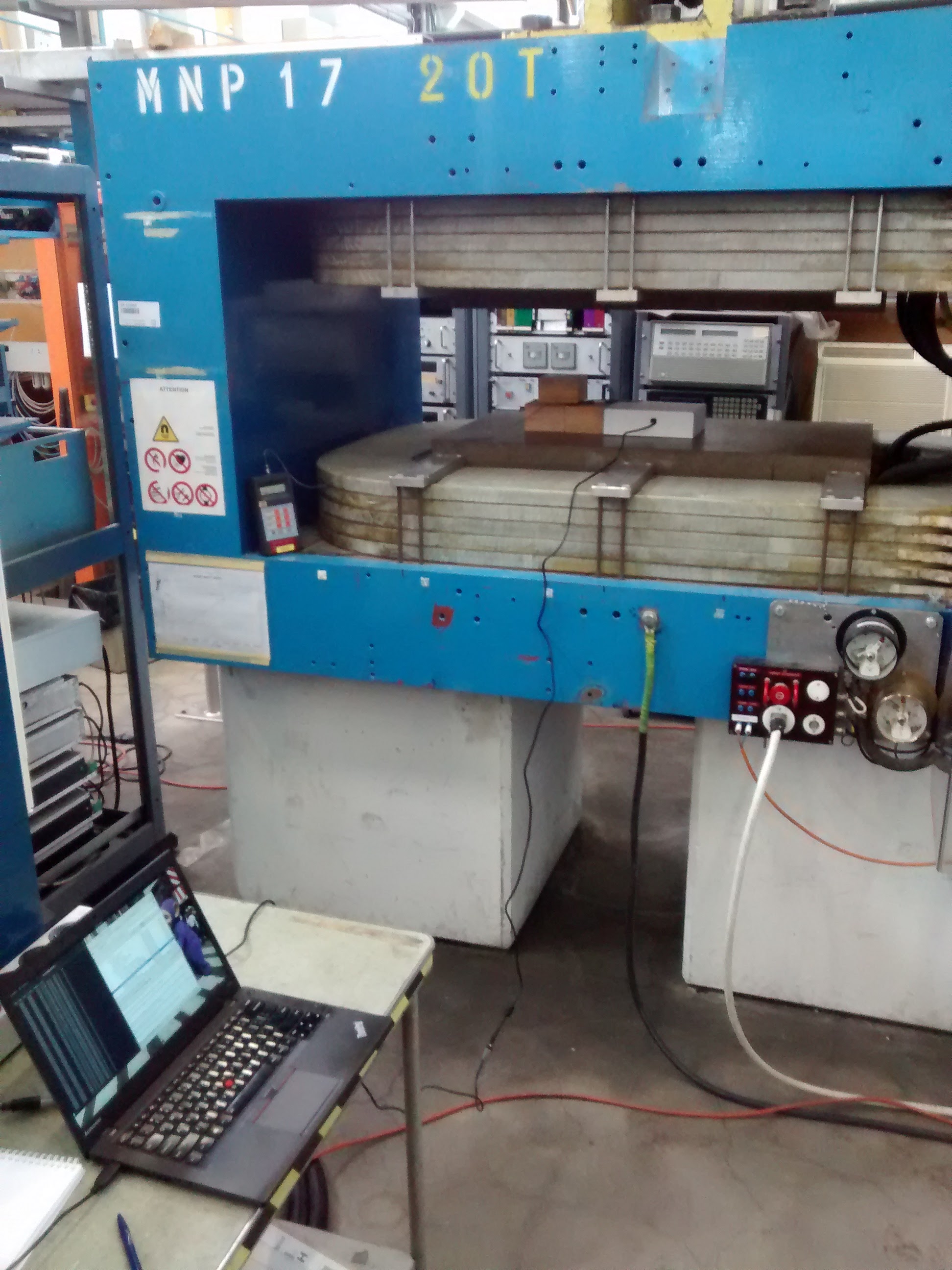Magnet tests
Today afternoon, I have been invited to conduct some magnetic stress tests on DCES to check that it can survive in strong magnetic fields. If successful, this test qualifies DCES for uses in CERN experiment pits.
DCES preparation
DCES could not be installed as is in a strong magnetic field because I already know that some components will be heavily impacted:
- Voltage transformers would suffer and we do not need to test those since DCES can receive power at the right voltage with a remote transformer.
- Fan driving the airflow would suffer heavily as well and here again, the airflow can be generated by a remote fan/pump with a pipe to DCES.
At that point, only the raw electronics has to be tested. I removed all the components from the portable DCES and installed those in a small cardboard box.
Cardboard do not stop magnetic fields and it prevent environmental dust from entering the optical dust sensor. Additionally taping on top of the cardboard box generates small amounts of dust. This allowed to test the correct behaviour of the dust sensor between tests.
Test setup
Those tests were conducted in a large electromagnet that can generate magnetic fields up to 0.5 Teslas when driven with 350 Amps current…
I hooked my laptop directly on the board with the longuest USB cable I could find to provide power and monitor DCES measurements while the magnetic field increased.

All DCES measurements for temperature, humidity and dust remained stable independently of the magnetic field strength.
Unfortunately, the Hall probe, that measured the magnetic field could not be connected to my computer during the tests and I am therefore missing the magnetic field strength data. This means that I could not plot anything useful…
After those successful tests, DCES electronics was re-installed in its original portable enclosure and lent to one of CERN experiments for real life tests. Its measurements are still perfectly fine and precise, meaning that DCES did not suffer any permanent damage due to strong magnetic field.